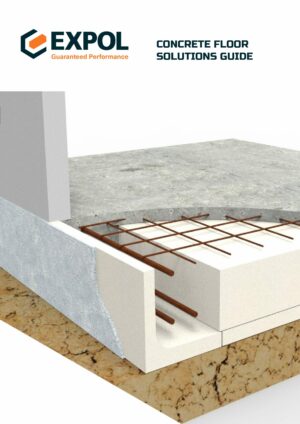Building or renovating a home is an exciting and significant life event! However, the time…

Calculating Concrete Slab R-Values to Meet New H1 Regulations
The EXPOL team spend plenty of time out and about onsite, or on the phones, regularly chatting to builders and architects about insulation. As a result, we know that the H1 changes for concrete slab R-values are causing a few headaches.
The rationale for the new code is very worthy, with the ultimate goal of giving Kiwi’s warmer, drier and more efficient buildings. However, the complexity of the changes have meant the construction industry has needed to make changes to the way R-values are calculated and to the design and construction of concrete slabs in order to achieve higher R-values.
Why R-Values have become More Complicated
In the past, there was one R-value across the country for each slab type, and calculating the R-value was a quick process. Under the new H1 requirements, there are changes which are adding complexity to the equation:
- R-values change depending on where in the country the building is taking place, ranging from 1.5 to 3.0
- Meeting the required R-value is harder, with additional insulation required.
Construction R-values by Climate Zone

Product vs Construction R-values
While the product R-value focuses on the insulation properties of a single material, the construction R-value considers the cumulative thermal resistance of all the materials and layers used in a specific building component.
Therefore, the construction R-value is more relevant when evaluating the energy efficiency and insulation performance of a complete building structure as it gives a holistic picture, and can take into consideration how different parts of the building work together. As concrete slabs represent a large portion of heat transfer for a building, slabs have become a bigger focus for the new code. Furthermore, with the perimeter of the slab being the primary area for heat transfer, the area to perimeter ratio takes on more significance. Larger slabs have higher area-to-perimeter ratios and therefore require higher R-values than smaller equivalent slabs. In recognition of this, under the new H1 regulations, the area to perimeter ratio now has a greater influence on the R-value than it did previously.
The background calculation for R-values has changed from the previous version, making it more difficult to achieve the same R-value. The area to perimeter ratio is one example, along with other factors such as increases for soil conductivity. As a result, most concrete slabs will now require edge insulation.
Therefore the challenge to meet a higher R-value has meant that additional insulation can be required, and often a combination of under floor and perimeter insulation is needed.
Getting Ready
EXPOL have been preparing for the new regulations and have:
- brought in new generation products to meet the higher R-values
- developed new product systems to simplify the installation of insulation
- completed thermal modelling to demonstrate the various product combinations that will meet the H1 requirements
New Products and New Systems Developed
As more slabs require edge insulation, the construction community indicated the need for a more complete and easy to use solution for perimeter insulation. EXPOL developed the MAXEdge system for in-situ applications and ThermaSlab Edge for retrofit applications. These new product solutions offer builders an easy way to add insulation to the framework before the concrete pour, or to attach insulation to the slab afterwards.
EXPOL has also developed SLABX200 for under slab insulation. This product is an evolution of XPS and is locally manufactured. SLABX200 provides a high quality product, delivering high R-values, an impressive compressive strength and confidence in supply.
We’ve done the Groundwork on Thermal Modelling
The EXPOL technical team have done extensive testing and modelling for the architect and specifier community, to demonstrate our products meet and exceed the construction R-values. This data can be found on the EXPOL website. A calculator is included to help construction professionals determine the area to perimeter ratio, a key value for determining the required R-value. Tables are also provided to help match ratio values with the R-values, and provide the product combination needed to meet the H1 requirements.
Find the tables for Slab on Grade and Waffle Pod Raft Slab Floor Insulation Systems.
Our technical team is here to help with any further questions on applying the new H1 regulations for insulation. Please get in touch with us today for a friendly chat.



